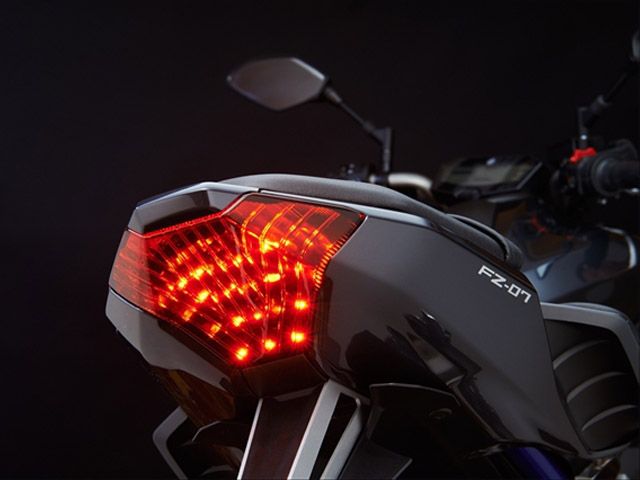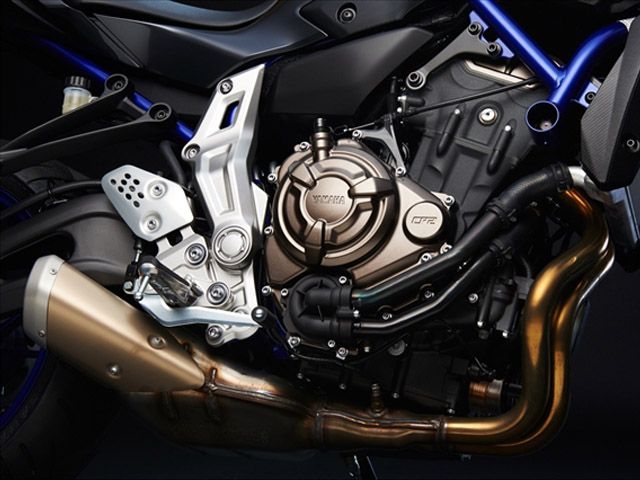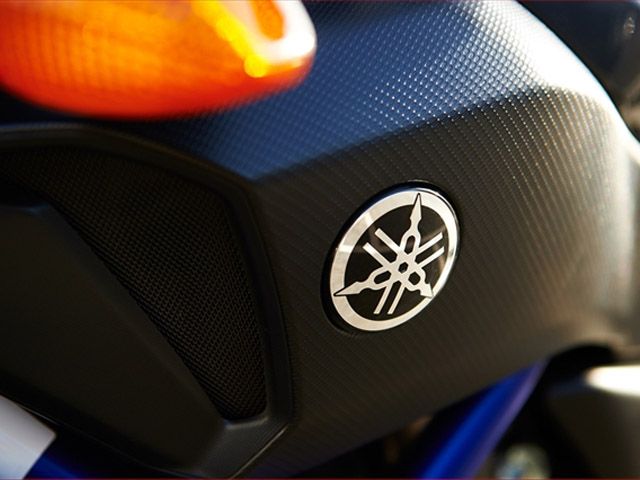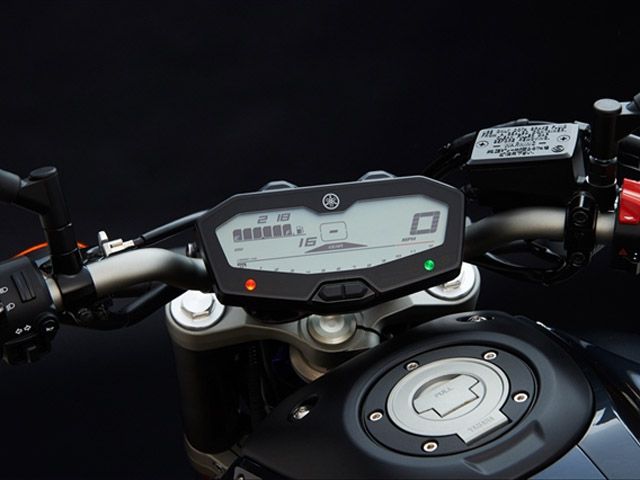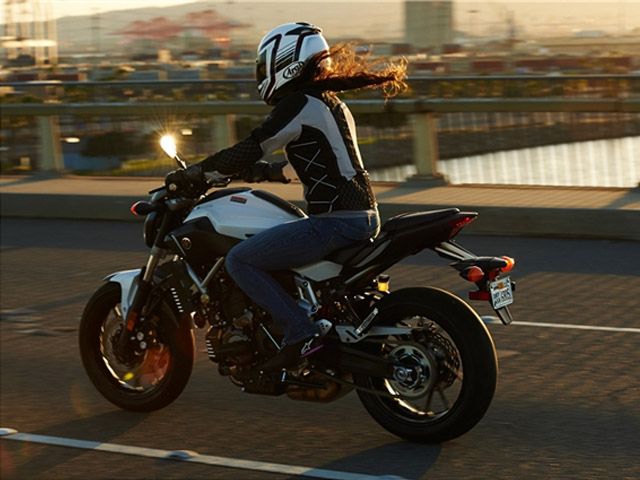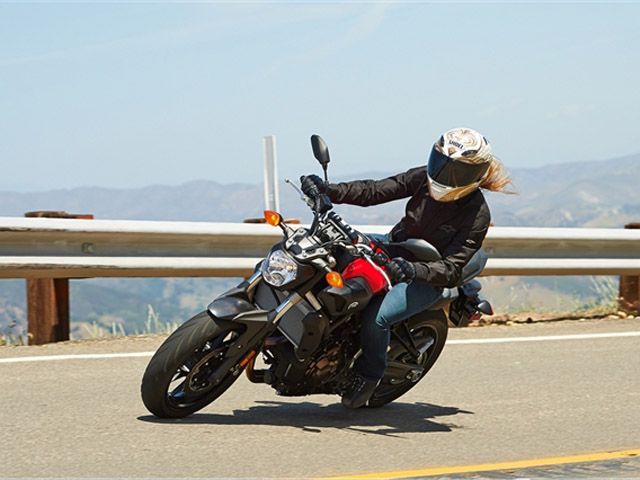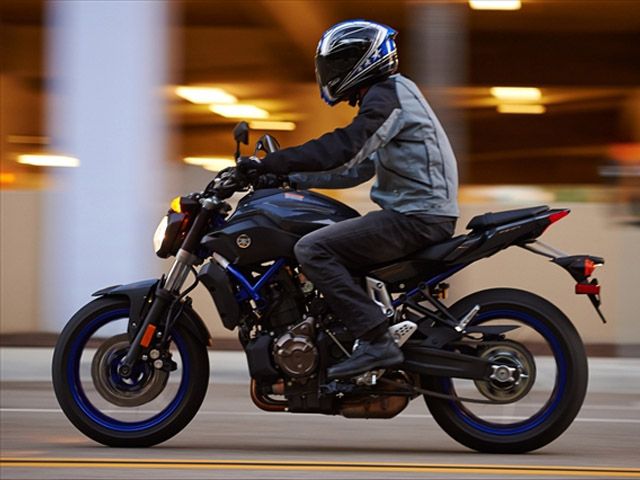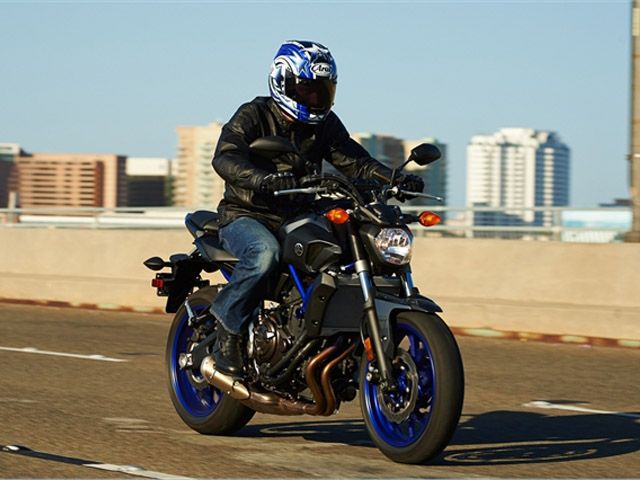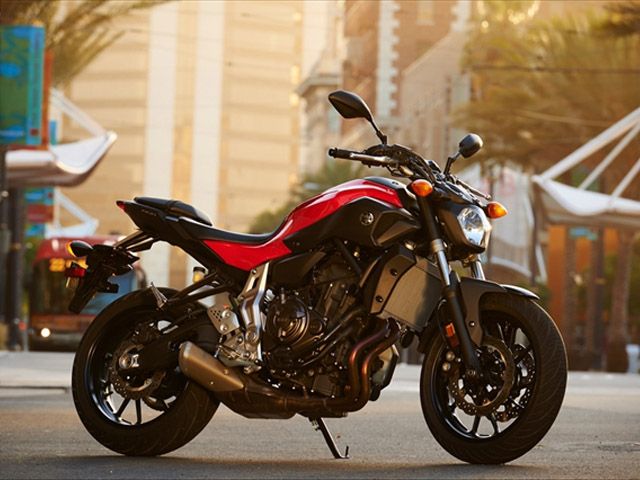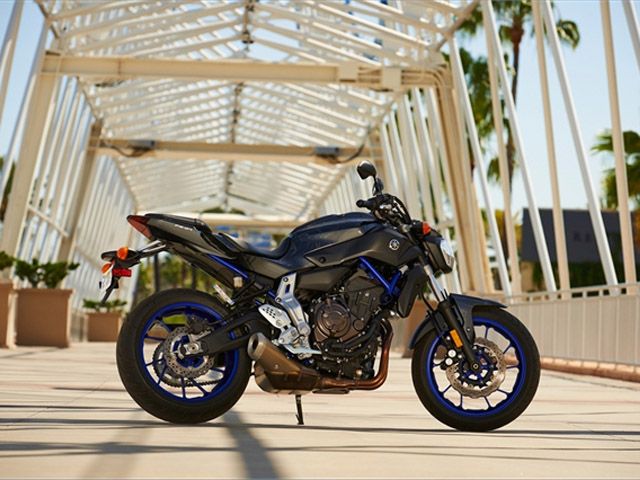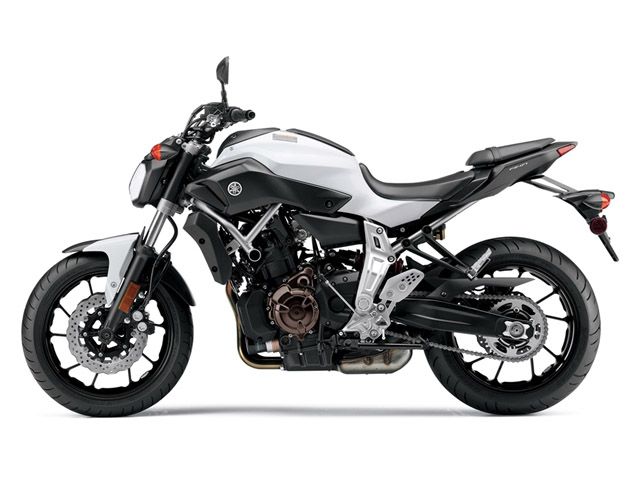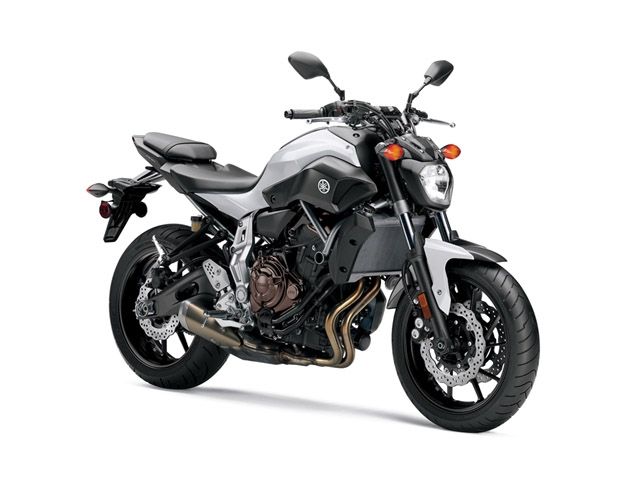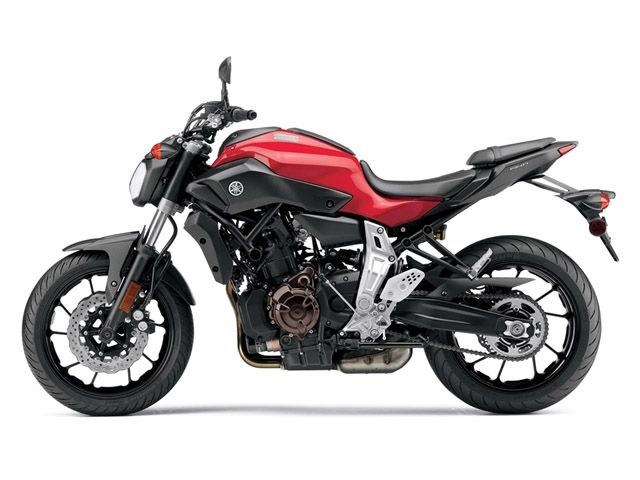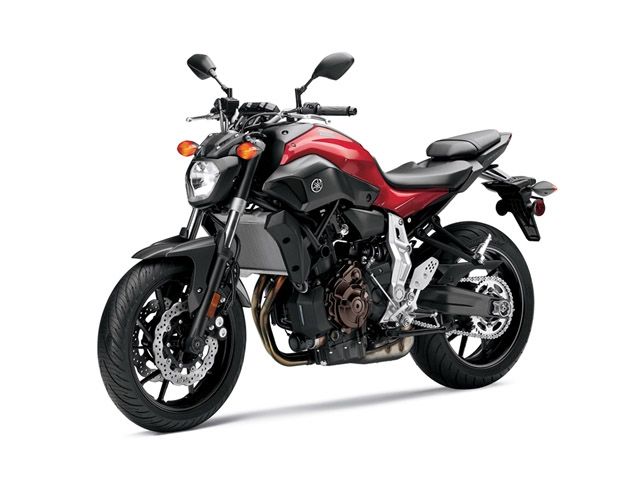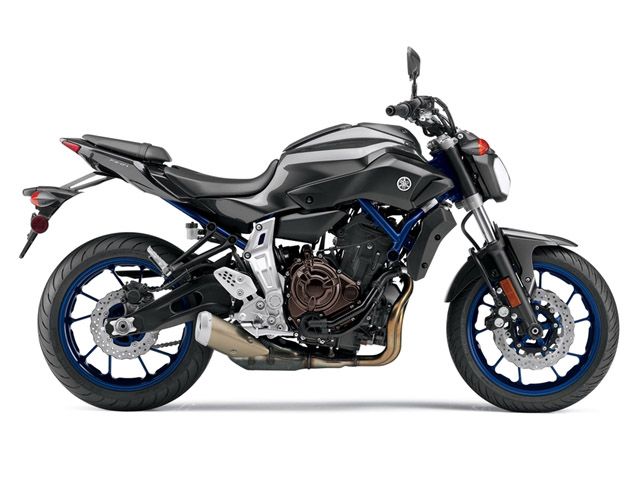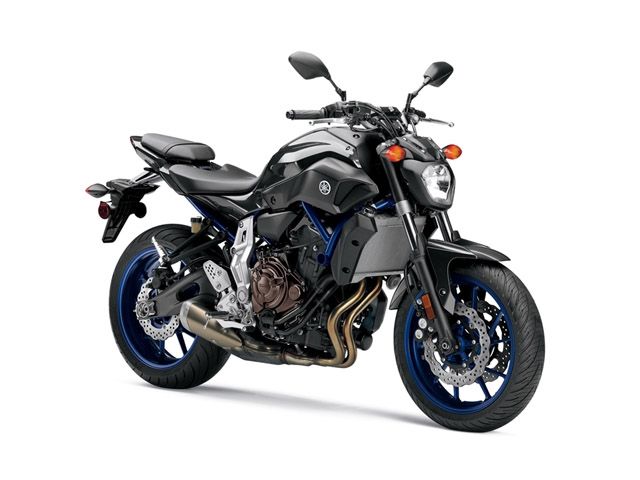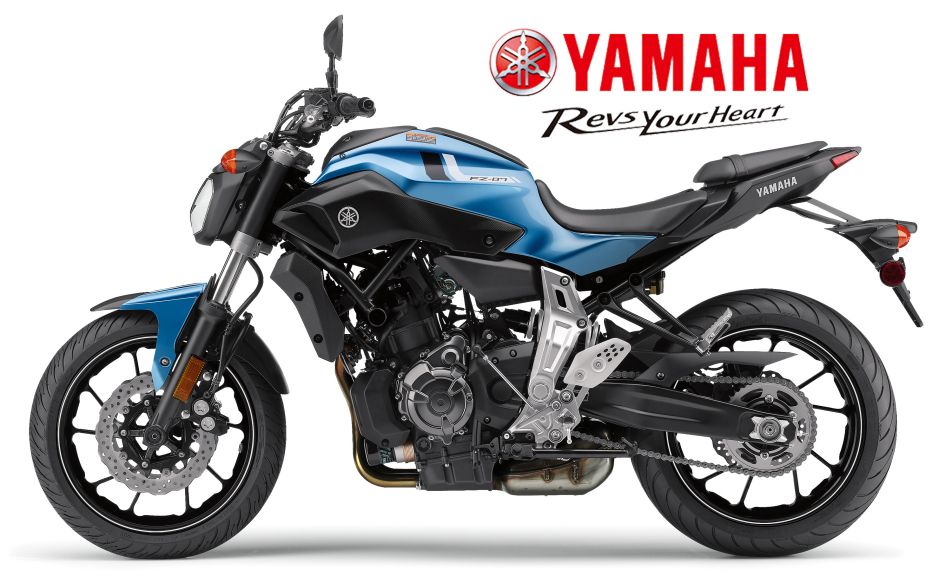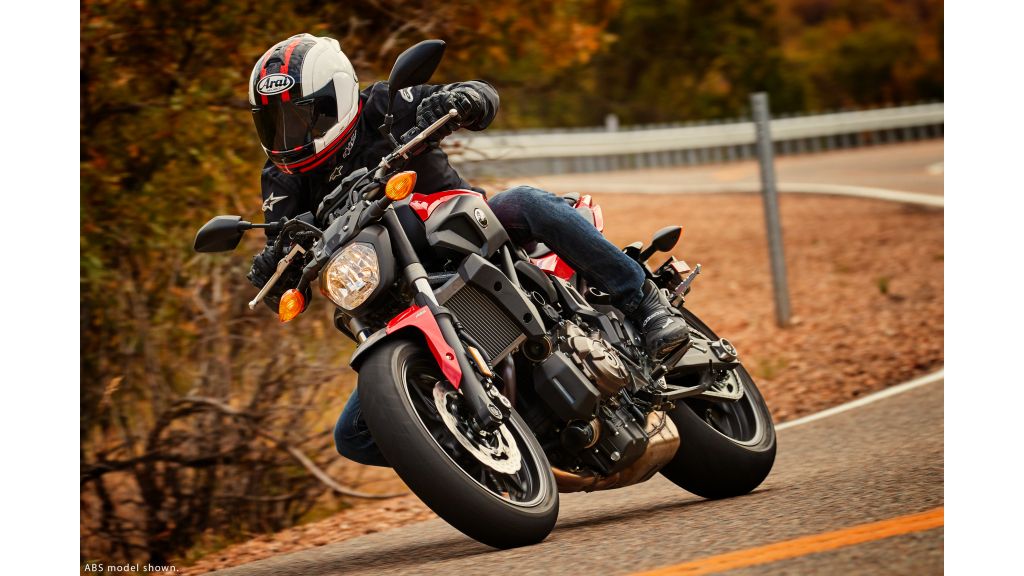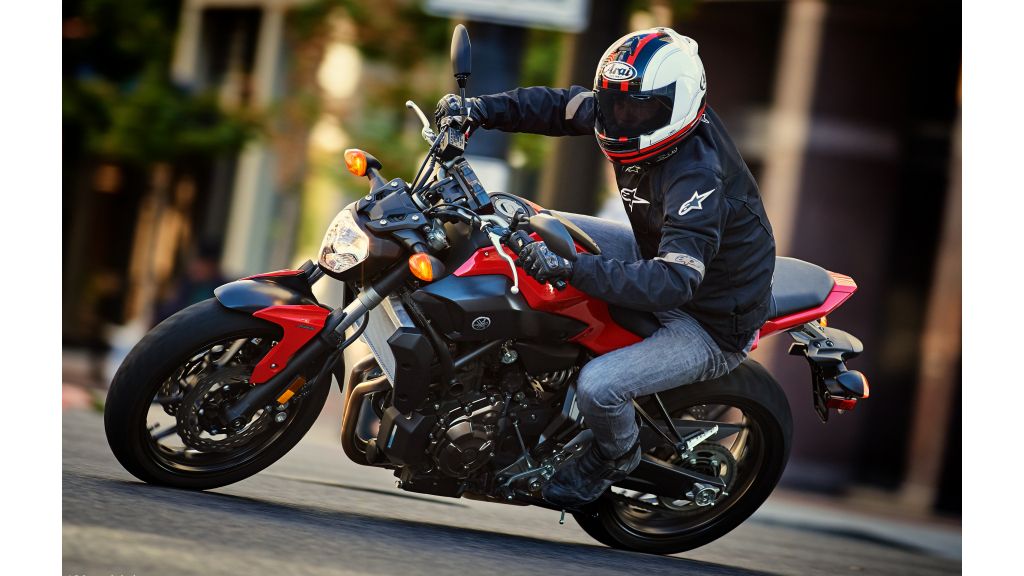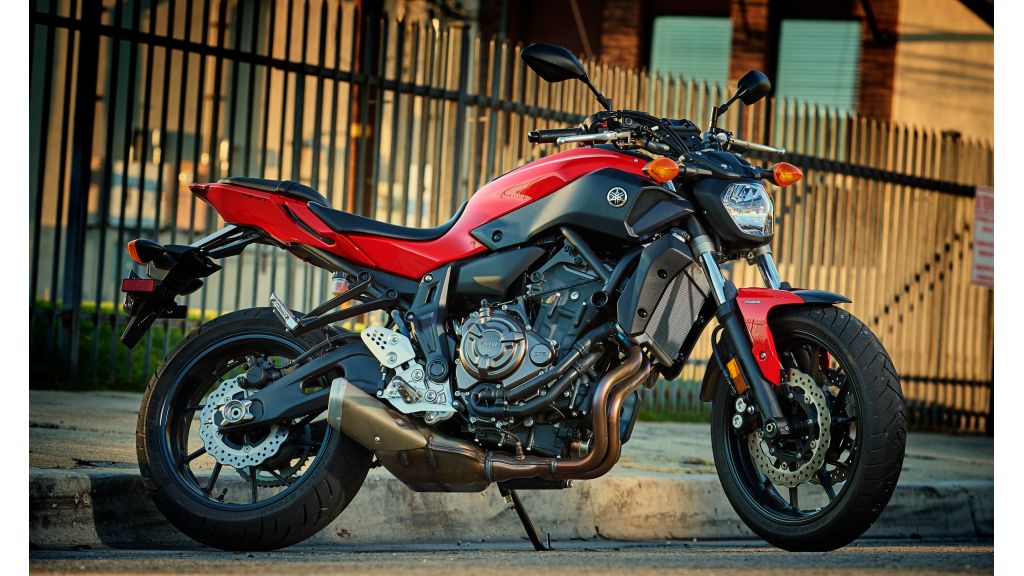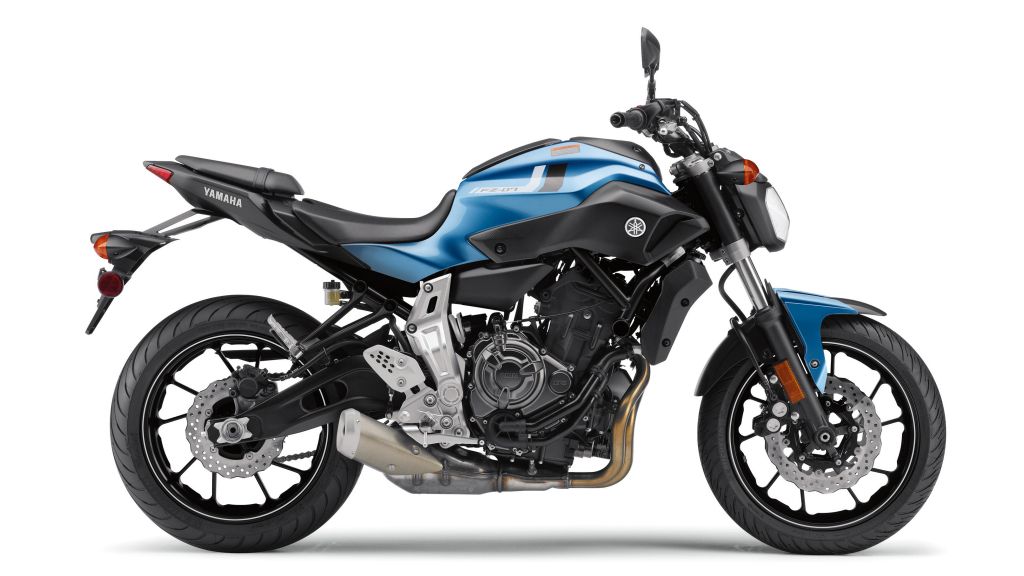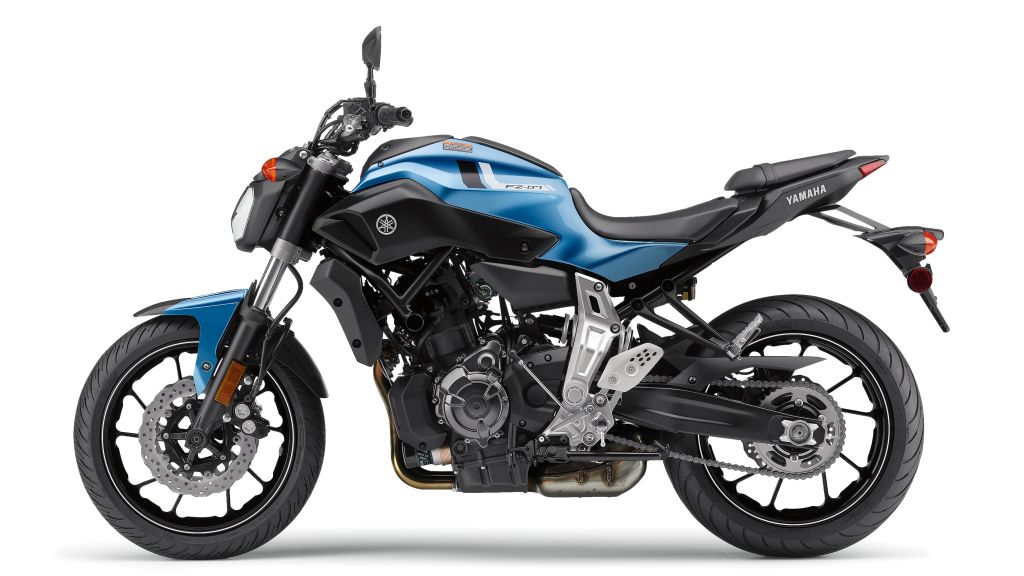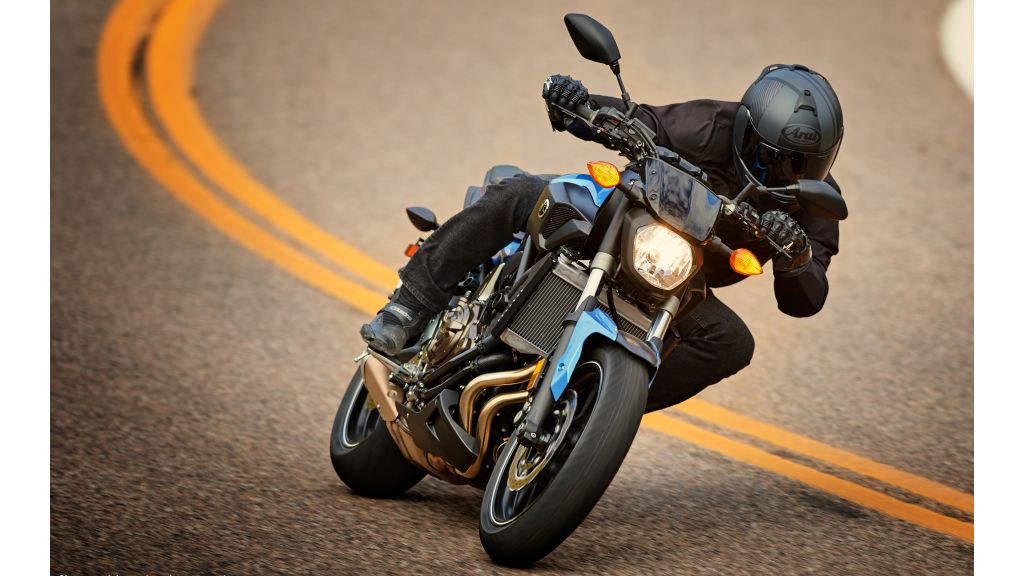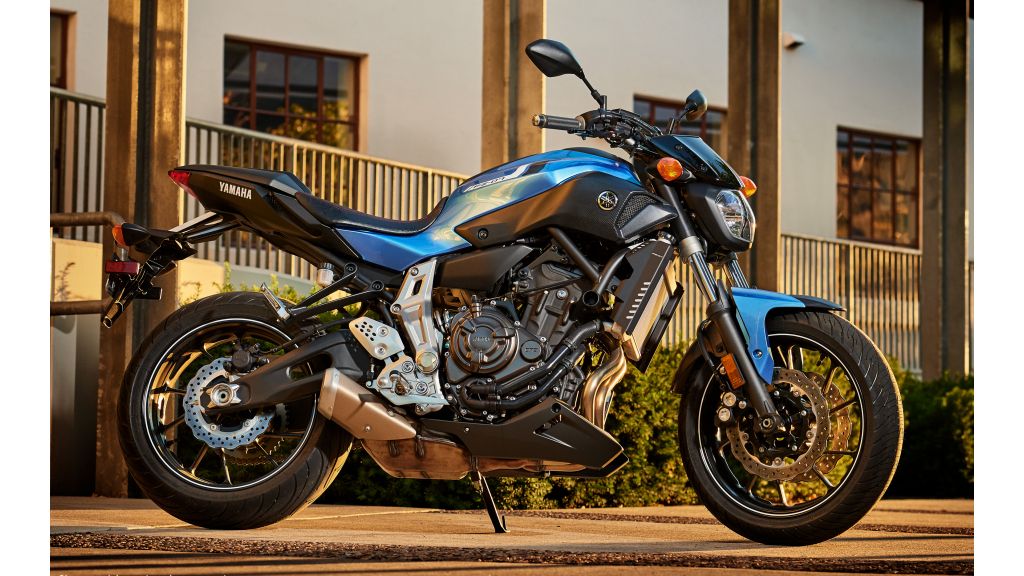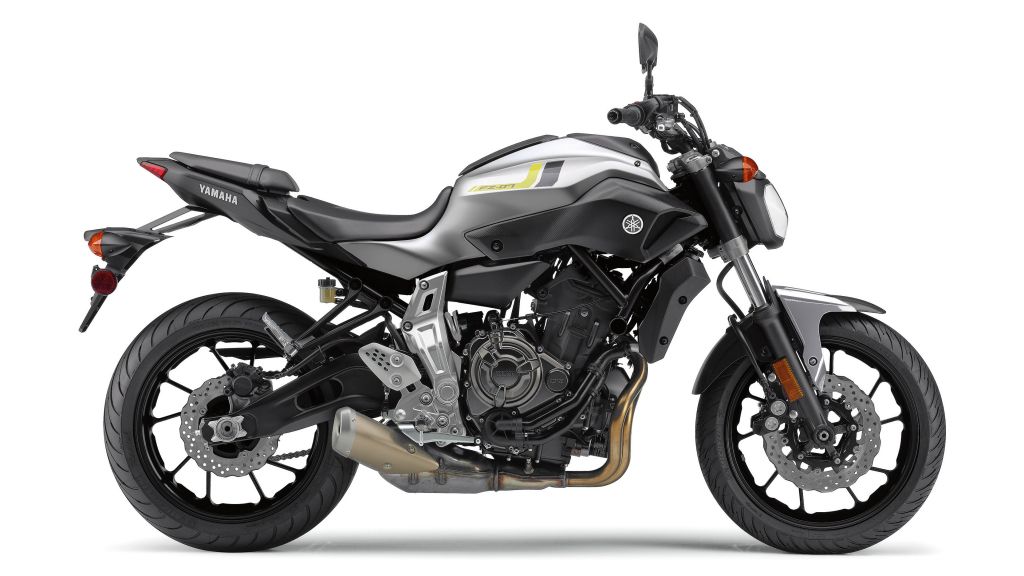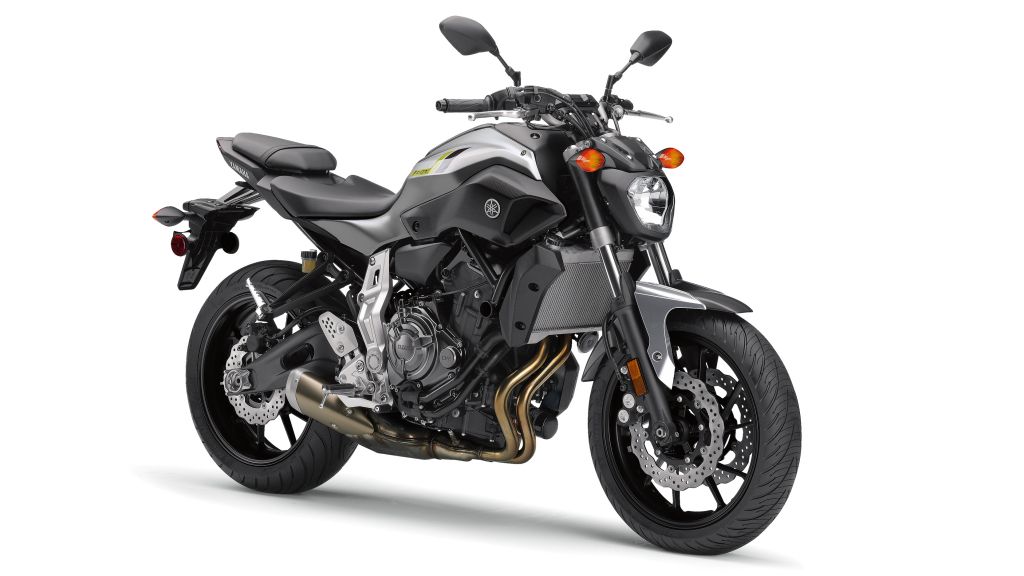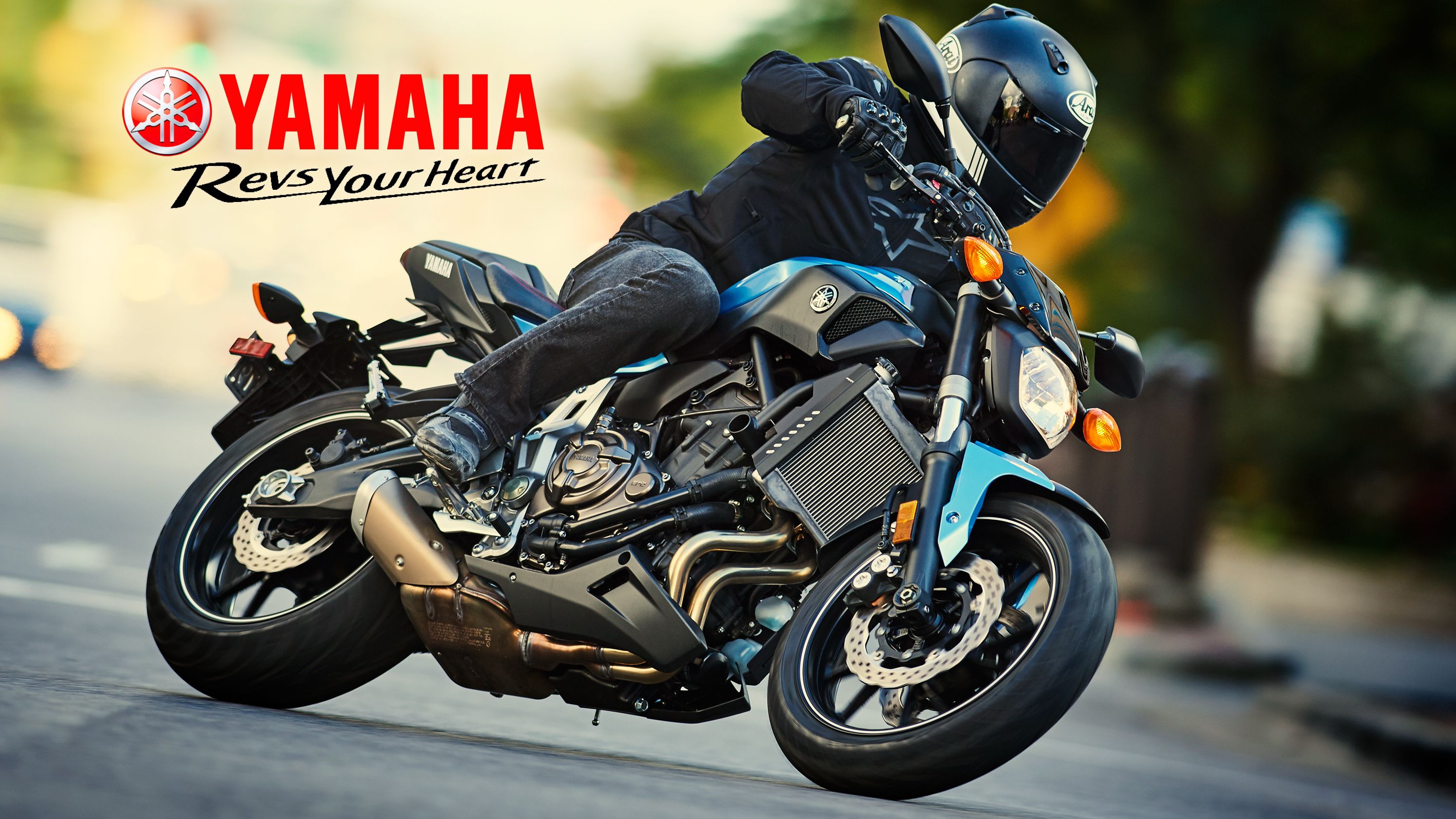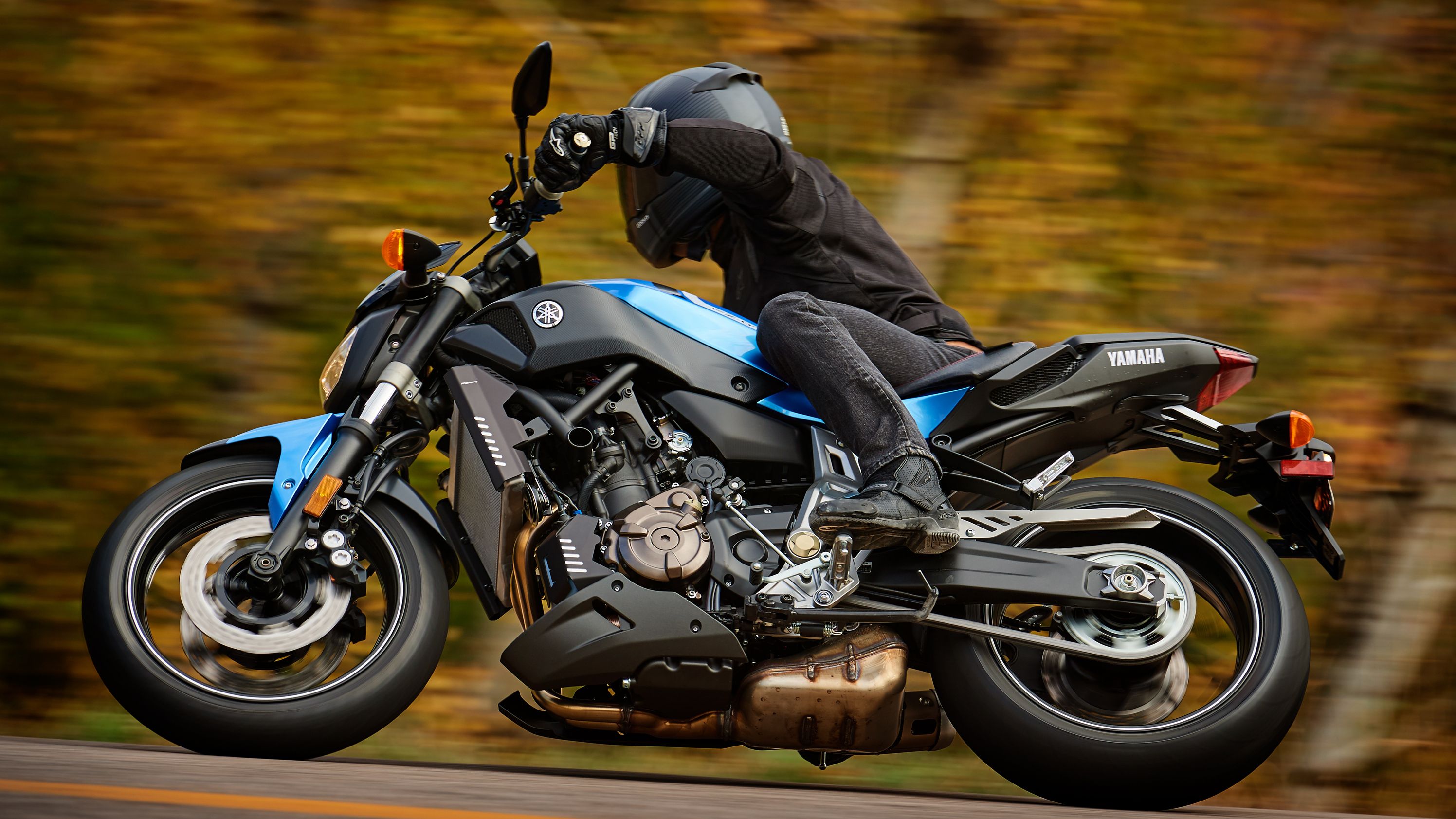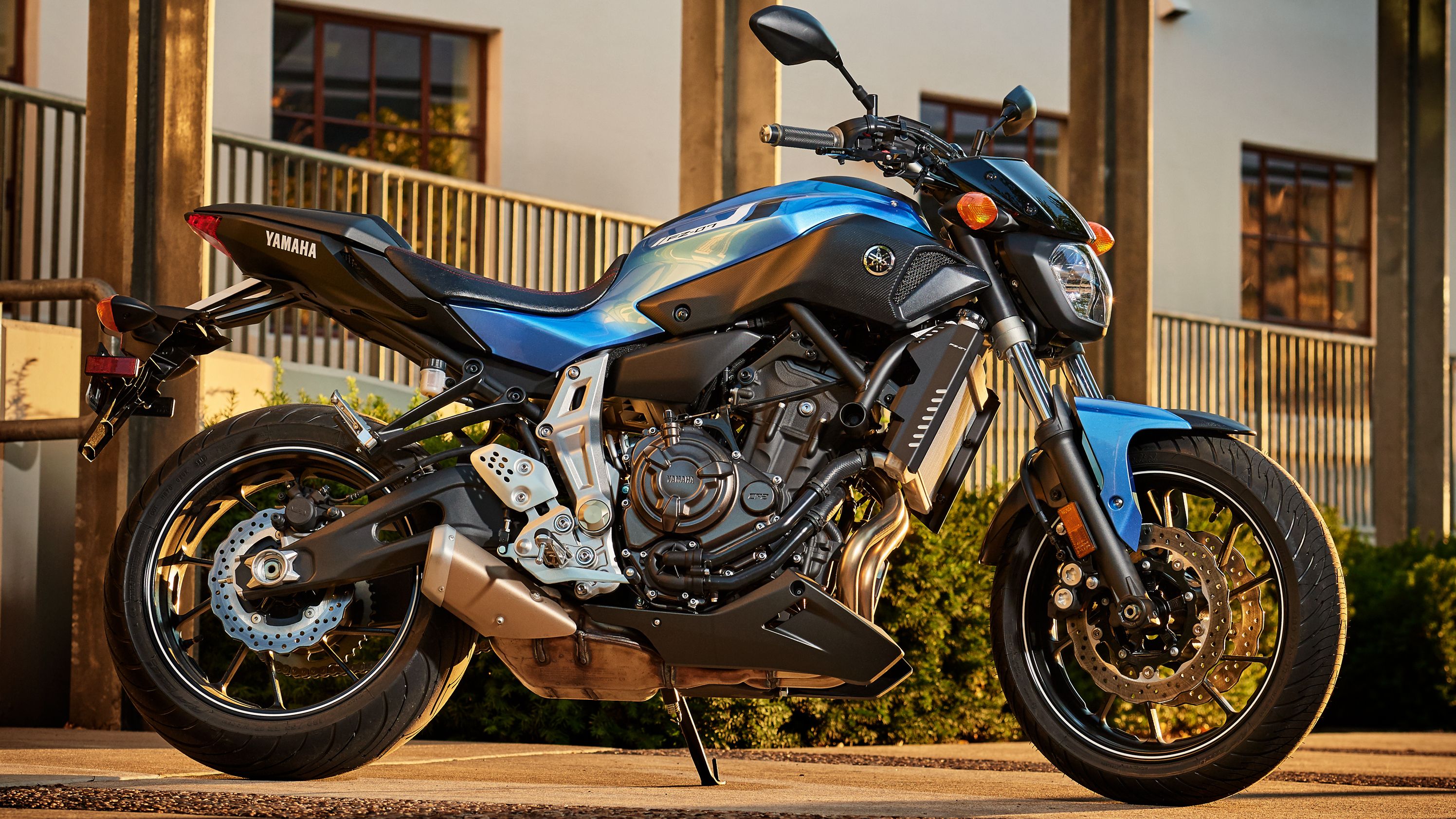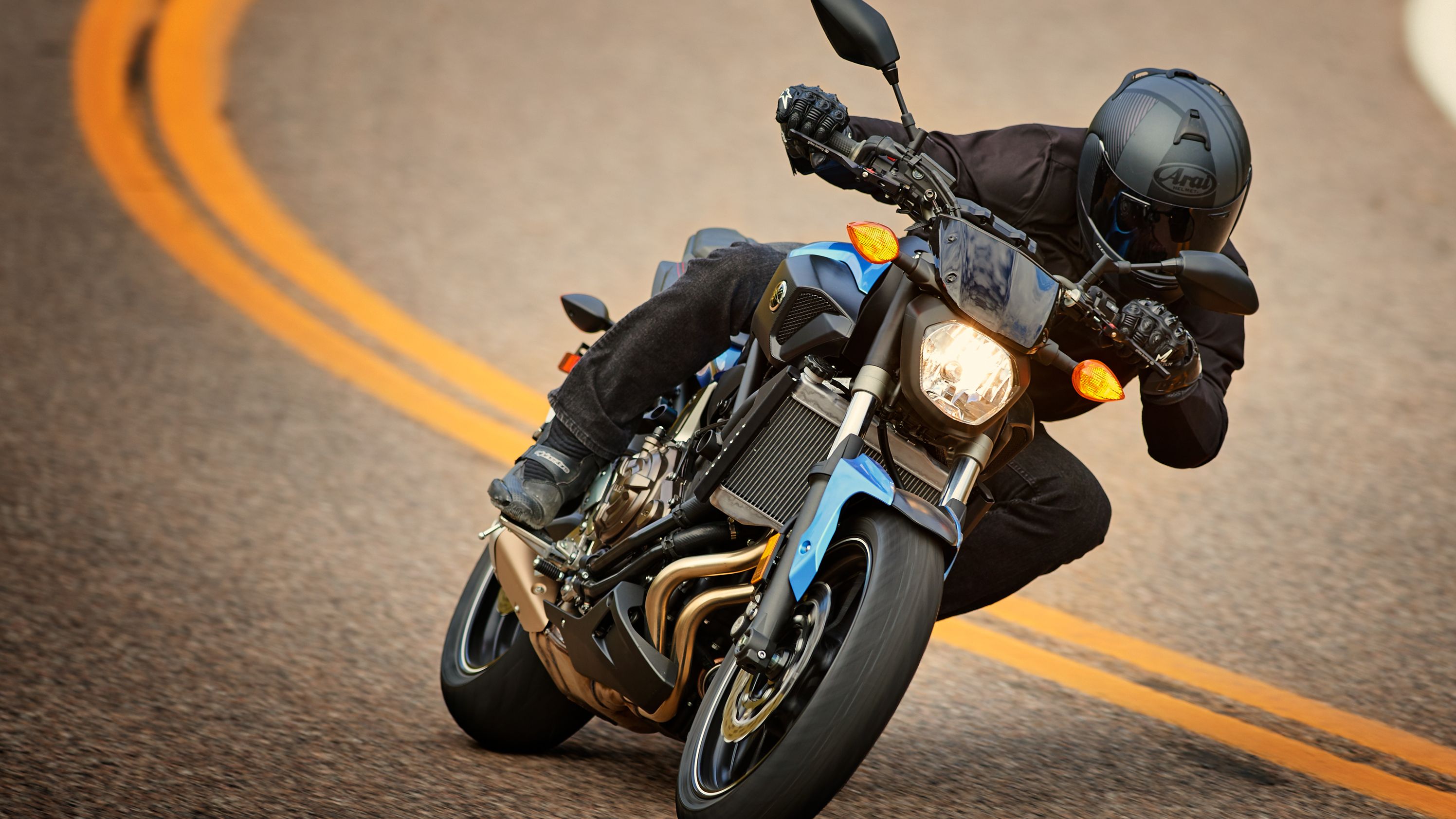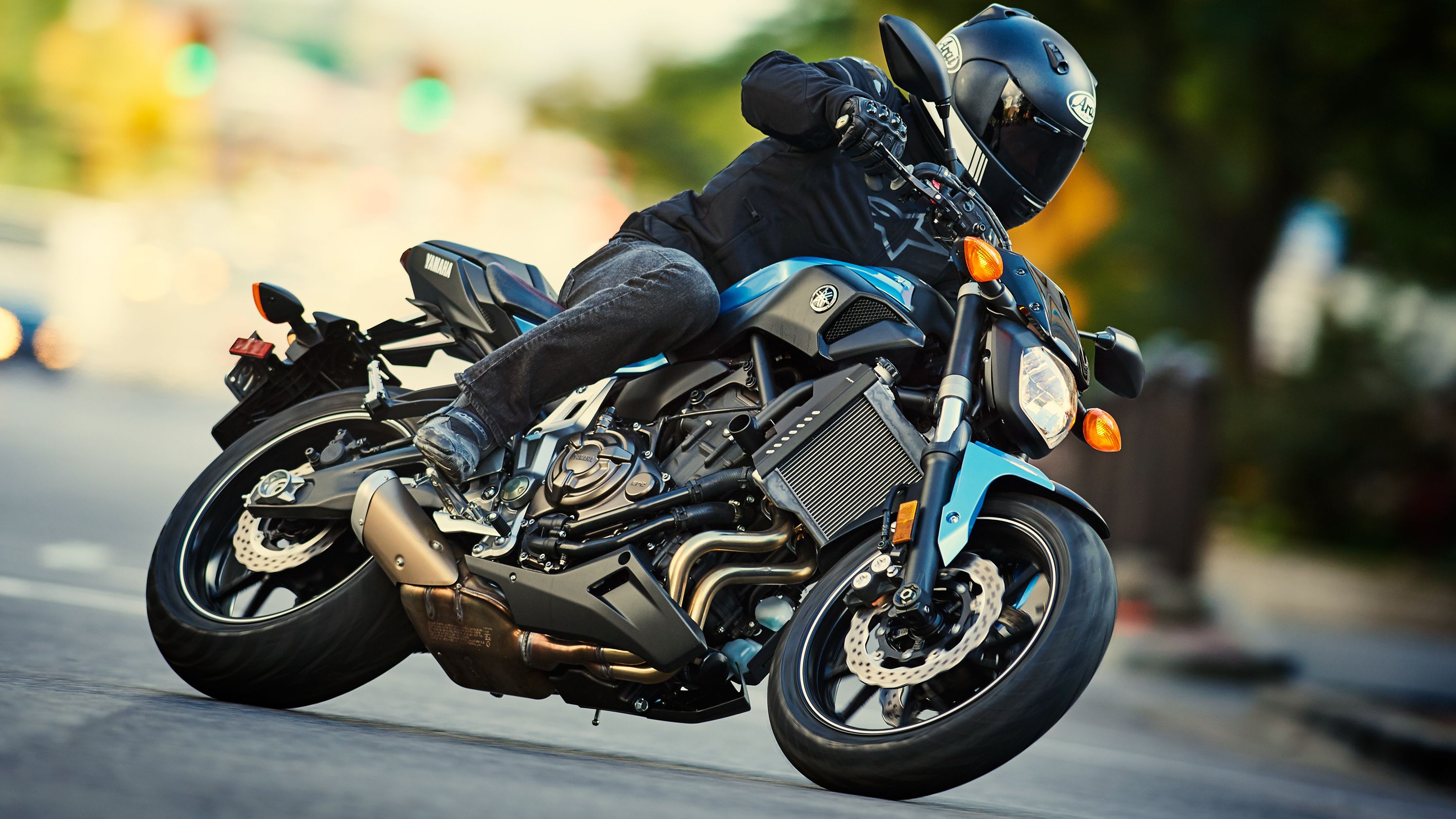Yamaha presses its advance into the mid-size sportbike->ke631 market with a two-prong attack in the form of the FZ-07. Naked->ke5317 and simple, this smallest FZ sibling brings a good balance of features to the table, and it can serve as an entry-level bike of sorts. Before anyone gets their knickers in a twist, “entry-level” isn't always synonymous with “kiddie bike.” Sometimes it refers to a bike that can serve as a first bike and go on to become an everyday commuter->ke5324, and much like its full-fairing cousin, the FZ6->ke2045R, this naked sport fills that niche. Since cowling bikes and naked bikes attract different sorts of buyers, this ride represents the Ying to the FZ6R's Yang in order to try and dominate the mid-size sport market. Today I'm going to take a look and see what Yammy has in store for us with this naked threat.
Continue reading for my review of the Yamaha FZ-07.
2015 - 2017 Yamaha FZ-07
- Make: Array
- Model: 2015 - 2017 Yamaha FZ-07
- Engine/Motor: Liquid-cooled DOHC 4-stroke: 8 valves
- [do not use] Vehicle Model: Array
Design
Back in the day, the earliest naked bikes were unpolished, and indeed looked unfinished, because most of them were more or less already-existing streetbikes with the engine cowl pulled off. Things have changed a bit since then and the genre has been polished and fairly well defined. The FZ-07 shows a bit of maturity of design with a sleek, minimalistic panache that looks planned out rather than just stripped. The front end carries a bit of custom flavor with blackout treatment on the fork sliders and upper fork tube.
A typically small headlight can carries a vestigial flyscreen with a couple of ridiculous-looking standoff turn signals that move around way too much from just normal bumps in the road. Air-scoop cheek fairings make up the only “sheet metal” beyond the requisite fuel tank, front fender and subframe enclosure with only the radiator up front to screen the engine from view.
The upper lines flow across the 3.7-gallon fuel tank to a shallow seat with a separate, slightly elevated pillion pad. I'm not seeing the usual nose-down/tail-up stance that makes so many bikes look like they are trying too hard, but the FZ-07 still manages to convey a certain sportiness nonetheless.
Seat height falls out at 31.7-inches high so it isn't too tall for the average rider, but a generous rider triangle leaves plenty of room for the big-and-tall folks and for body English so the bike will fit the vast majority of body types and riding styles.
Chassis
Tubular-steel members make up the diamond-type frame that barely peek out from under the minimal cheek fairings; a departure from the popular Trellis frame that usually acts as part of the décor as much as a critical structure. A large chunk of the frame is replaced by the mill as the stressed-engine arrangement uses the cases and jugs to complete the assembly. Not only does this make for a lighter skeleton, it leaves absolutely nothing to the imagination with the engine completely exposed.
The steering head comes set for a sporty, 24.8 degrees of rake and 3.5 inches of trail, which when combined with the relatively light 400-pound wet weight, makes the FZ-07 quite flickable and eager in the corners. Symmetrical, 17-inch, cast-aluminum rims mount the 120/70 front hoop and 180/55 rear. Suspension travel is fairly plush with 5.1 inches at the axle, but the components themselves are rather plain with 41 mm, rwu, non-adjustable front forks and rear monoshock that comes with the obligatory spring preload but nothing else. All a bit of a bore, I know, but Yamaha was trying to keep the thing priced competitively and so it had to go bottom shelf on some of the features.
Quad-pot calipers bite the dual, 282 mm front discs, and a single-pot caliper binds the 245 mm disc in back. Yamaha makes the standard-brake model in three different colors, but if you want the new-for-2017 ABS protection then you had better like Yammy's Rapid Red paint package, cause that's the only color that will sport the anti-lock brakes in the 2017 model year. The ABS turns this bike into a viable commuter, since commuters are less likely to be working their way up through the power brackets and are looking for dependability and safety from their ride. Beginners will always benefit in the long run if they learn to ride without the benefit of ABS and instead feel the honest feedback while developing their skillset, but I guess I'm old school like that.
Drivetrain
The beating heart for this little beast is Yamaha's “Crossplane Concept” engine, a parallel-twin mill that runs a 270-degree firing offset for a little lope at idle and plenty of BRAAP when you get twisty with it. Good old-fashioned cables control the throttle, with none of that fancy, ride-by-wire nonsense to complicate the works, and the result is fine-but-honest control over the engine revs. Water cooling prevent the engine from overheating in traffic while helping it meet emissions and damping the mechanical noises inside the cases-- too bad the radiator is so obvious and ugly.
In order to tighten things up and reduce the size of the drivetrain, Yamaha “stacked” the mainshaft and countershaft in the transmission, shortening the tranny fore-and aft while adding just a tad of vertical bulk. The factory saved some money on the clutch, and if you are looking for a slipper clutch here then you're going to be mighty disappointed. Granted, entry-level riders don't really need it, and commuters are probably not riding hard enough to merit the extra expense. Still, everyone can benefit from a softer left-hand pull, especially after about the 97th shift on the way to/from work/school.
One of the things you'll notice right away is the smoothness of the power delivery and how flat the powerband is. The engine has something to give from 2,000 rpm on up, and can pull well from a rolling start, and pick the front wheel up easily anywhere in the first three gears. Of course, we're talking about 50 pounds of grunt on a 400-pound bike, so even though the power delivery is a tad flat, it's also stable, predictable, and less likely to make you wet yourself if you crack on a little too hard in a turn. Gotta take the good with the bad, but honestly, I've heard no real complaints yet.
Pricing
Price is tied to color, but not in the usual way. The 2017 FZ-07 can be had without ABS for $7,199 in the Glacier Blue, Rapid Red or Matte Silver livery. Fans of Rapid Red and ABS will rejoice, because that's the only combination available if you want that safety net, but it will boost the price on up to $7,499.
Competitors
The naked market has boomed over the last five years, and there's no shortage of worthy competitors in the mid-weight supernaked category, so I had plenty to work with. After I narrowed it down to a couple of contenders from the Big Four, I decided to eliminate Suzuki's SV->ke2109650 ABS just because it's so damn fugly. That leaves me with Kawasaki's Z->ke5392650 for my head to head, so let's see how they stack up.
As always, aesthetics are subject to taste. From my perspective, they both carry minimal cyclops headlights, but the Kawi has a ridiculous looking, Transformer-like headlight with a flyscreen big enough to protect the instruments, and little else. Yeah, you can pencil me in as “not a fan” of the juvenile-looking headlight on the Z650. Neither has much in the way of exposed framing, and neither carries the big, confidence inspiring exposed Trellis frame that looks like an exoskeleton that we see in the larger displacements, but Kawi shows off what it's got with a “Kawi green” paintjob that sets the frame apart from the rest of the black-and-white ensemble. It's a nice touch that accentuates the frame while simultaneously showing off how minimal it truly is. As for the rest of the package, I find the FZ-07 to be a bit cleaner overall, and not as busy looking as the Z650, even with its whisker lights up front.
Yamaha's suspension turns in a solid 5.1 inches of travel all around while the Kawi falls off a bit with 5.1-inches in back but only 4.9-inches up front. It's a minor difference, but there it is, and neither come with any sort of adjustability in the suspension beyond the obligatory spring preload in back. The Z650 brakes are slightly larger with a pair of 300 mm front discs versus the 282 mm discs on the FZ-07, but both manufacturers make sure you have the ABS option available if you want it.
Parallel-twin mills rule the day, and liquid-cooling plus fuel injection keeps emissions in the acceptable range. What we don't have is a lot of traction-control/rider-mode bollocks to complicate the engine controls. As usual, results vary according to whose dyno is used, but while Yamaha claims 50 pounds of grunt, the Kawasaki actually puts out something in the neighborhood of 44 pound-feet for a difference that will definitely register on the heinie dyno.
Pricing differences are razor thin with Kawi sliding in at the bottom with a $6,999 sticker on the base Z650, and a $7,399 tag on the ABS version. That's two bills cheaper than the base FZ-07, and one bill less than the ABS model-- definitely not enough to pull anyone across the fence.
He Said
“I like the more refined looks of these later generations of naked bikes a lot more than the early efforts that looked like someone partially disassembled a sportbike in their backyard and tried to pass it off as something original. This is a perfect example of what “naked” should be, but given my 'druthers I think I would still prefer a cowling bike like the FZ6R or even the R1, but that's mainly because of my love of hitting the highway for some extended transit at speed. That said, this makes a great ride for an urban commute and basic transportation.”
She Said
My wife and fellow motorcycle writer, Allyn Hinton, says, "The FZ-07 is very comfortable, though it is a little too quiet for my liking. I want to be heard -- not because of an ego thing, but because I want cars to hear me so they look for me before making moves in traffic. A lot of folks will like the small digital display on the FZ-07, me not so much. My ol' lady eyes just can't take in the information at a glance like I can with sweep gauges, but that is a personal preference. It is a fun bike to ride and quite easy to pick up the front wheel if you're inclined to do that. Me, I like both wheels on the pavement. Acceleration is snappy and engine braking is quite strong. All-in-all, I'd say yes to being a fun commuter and yes to being a fun weekender."
yes0}
|
Engine: |
|
|
Engine Type: |
689cc liquid-cooled DOHC 4-stroke; 8 valves |
|
Bore x Stroke: |
80.0mm x 68.6mm |
|
Compression Ratio: |
11.5:1 |
|
Fuel Delivery: |
Fuel injection |
|
Ignition: |
TCI: Transistor Controlled Ignition |
|
Transmission: |
Constant mesh 6-speed; multiplate wet clutch |
|
Final Drive: |
Chain |
|
Chassis: |
|
|
Suspension / Front: |
41mm fork; 5.1-in travel |
|
Suspension / Rear: |
Single shock, adjustable preload; 5.1-in travel |
|
Brakes / Front: |
Dual hydraulic disc, 282mm; ABS model available |
|
Brakes / Rear: |
Hydraulic disc, 245mm; ABS model available |
|
Tires / Front: |
120/70ZR17 |
|
Tires / Rear: |
180/55ZR17 |
|
Dimensions: |
|
|
L x W x H: |
82.1 in x 29.3 in x 42.9 in |
|
Seat Height: |
31.7 in |
|
Wheelbase: |
55.1 in |
|
Rake (Castor Angle): |
24.8° |
|
Trail: |
3.5 in |
|
Maximum Ground Clearance: |
5.5 in |
|
Fuel Capacity: |
3.7 gal |
|
Fuel Economy: |
58 mpg |
|
Wet Weight: |
397 lb (ABS: 403 lb) |
|
Details: |
|
|
Warranty: |
1 Year (Limited Factory Warranty) |
|
Colors: |
|
|
2015: |
Pearl White, Liquid Graphite, Rapid Red |
|
2016: |
Armor Gray, Raven, Matte Silver |
|
2017: |
Glacier Blue, Rapid Red, Matte Silver (ABS - Rapid Red) |
|
Price: |
|
|
2015: |
$6,990 |
|
2016: |
$6,990 |
|
2017: |
$7,199 (ABS - $7,499) |


